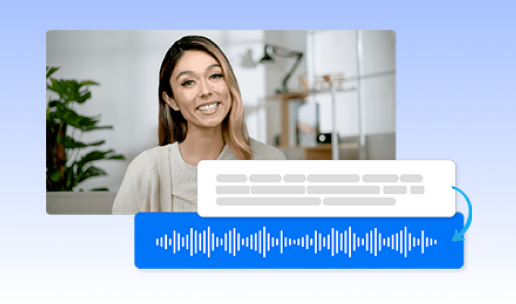In this post, I will discuss how to transform creativity with AI. Also, we will explore image to video AI, text to speech, and video translator tools.
In today’s digital age, artificial intelligence (AI) is transforming the way we create, communicate, and consume content. What once required professional video editors, voice artists, and translators can now be achieved with a few clicks using advanced AI tools.
Among the most revolutionary technologies are image to video AI, text to speech, and video translator tools. These innovations are making it easier than ever to produce engaging multimedia content, breaking barriers of language and skill.
Table of Contents
1. Image to Video AI: Turning Still Images into Dynamic Stories
One of the most exciting developments in creative technology is image to video AI, which allows users to convert static images into realistic, moving videos. This technology utilizes advanced machine learning models to analyze visual details and predict motion, bringing life to photographs.
With image to video AI, you can easily create animated short clips for social media, marketing campaigns, or storytelling. For instance, brands can showcase their products in motion even without a real video shoot. Artists and photographers can utilize this technology to enhance the cinematic quality of their portfolios.
Some AI platforms let you upload a single image and transform it into a talking portrait, a moving landscape, or even an animated character. These tools are powered by neural networks trained on thousands of video sequences, enabling them to generate fluid, natural-looking movements.
What’s more, image to video AI is not limited to professionals. Even beginners can utilize these tools to create short films or animated presentations with ease. Whether you’re creating engaging educational material or personalized content for social media, this technology offers unlimited creative potential.
2. Text to Speech: Giving Words a Natural Voice
The second major innovation revolutionizing content creation is text to speech technology. As the name suggests, text to speech converts written text into realistic audio narration. Modern TTS tools have evolved far beyond robotic voices — they now deliver lifelike speech with natural tone, emotion, and pacing.
Text to speech AI is widely used in multiple industries. You can see it in action in e-learning videos, podcasts, news reading apps, and video tutorials. For example, content creators without access to professional voice actors can rely on TTS to narrate their scripts in multiple languages and voices.
The advantage of text to speech lies in its accessibility and time efficiency. It enables content creators to produce high-quality audio instantly, without the need for expensive recording equipment. Many advanced tools allow you to adjust voice tone, gender, and even regional accents to match your audience’s preferences.
For businesses, this means faster video production and more consistent branding. Imagine writing a blog post and converting it into an audio podcast or video narration within minutes — that’s the power of AI-driven text to speech.
In addition, TTS technology is transforming accessibility for visually impaired users, helping them consume written content through natural voice output. It also enhances language learning by allowing users to hear correct pronunciations in real-time.
3. Video Translator: Breaking Language Barriers Globally
While image to video AI and text to speech enhance creation and narration, video translator tools make it possible for that content to reach a global audience. A video translator uses artificial intelligence to automatically translate and subtitle spoken content into different languages.
This innovation is particularly useful for YouTubers, educators, marketers, and global companies. Instead of manually translating and re-recording videos, creators can now translate audio and subtitles into dozens of languages with incredible accuracy.
Modern video translator tools not only add translated text but can also synchronize lip movements using AI, creating a seamless multilingual viewing experience. This means a video made in English can sound like it was originally recorded in Spanish, French, or Chinese — with natural voice tones and synchronized mouth movements.
By combining video translator tools with text to speech, creators can instantly generate localized versions of their videos for different audiences, eliminating the high cost of professional dubbing. This innovation enables faster and more affordable global communication.
4. The Perfect Combination: AI-Powered Content Creation
The real magic happens when you combine image to video AI, text to speech, and video translator in a single workflow. Imagine this: You upload a few images, transform them into a short video using image to video AI, generate an engaging narration with text to speech, and then translate the video for international audiences with a video translator.
This comprehensive process can be completed in minutes, empowering individuals and businesses to produce professional, multilingual content without requiring large budgets or specialized teams. Whether you’re a digital marketer, educator, influencer, or filmmaker, these AI tools simplify your workflow while maintaining high quality.
Conclusion
The evolution of image to video AI, text to speech, and video translator technologies marks a new era of creativity and accessibility. They empower everyone — from solo creators to large organizations — to bring their ideas to life in ways that were once unimaginable.
With image to video AI, you can animate your imagination. With text to speech, you can give your words a voice. And with a video translator, you can share your message with the world, crossing all language barriers. Together, these tools redefine how content is created, personalized, and shared — proving that the future of digital storytelling is truly powered by AI.
INTERESTING POSTS
- Changing Texts To Audio: Practical Uses Of Text To Speech
- Harnessing Technology to Strengthen Spoken Language Skills in Non-Native Learners
- Shield Your Privacy With AI-Powered Image Search
- Image to Video AI: What It Is and How to Use It Effectively
- Let Viddo AI Take You to Witness the Next Revolution in Video Creation
- Vidwud AI: The Ultimate Tool for Head Swap and Clothes Changer Online Free
- Is Google Translate Secure? [We Have The Answer]
- How To Translate On Google: A Comprehensive Guide for Language Enthusiasts
About the Author:
Amaya Paucek is a professional with an MBA and practical experience in SEO and digital marketing. She is based in Philippines and specializes in helping businesses achieve their goals using her digital marketing skills. She is a keen observer of the ever-evolving digital landscape and looks forward to making a mark in the digital space.










